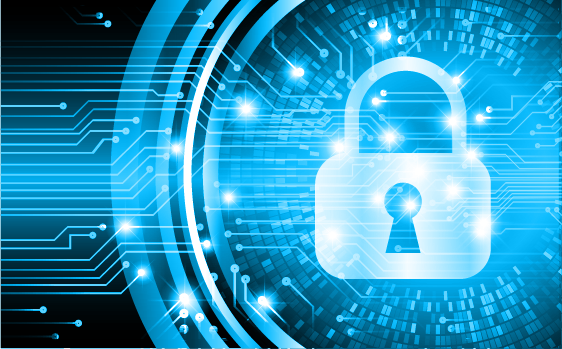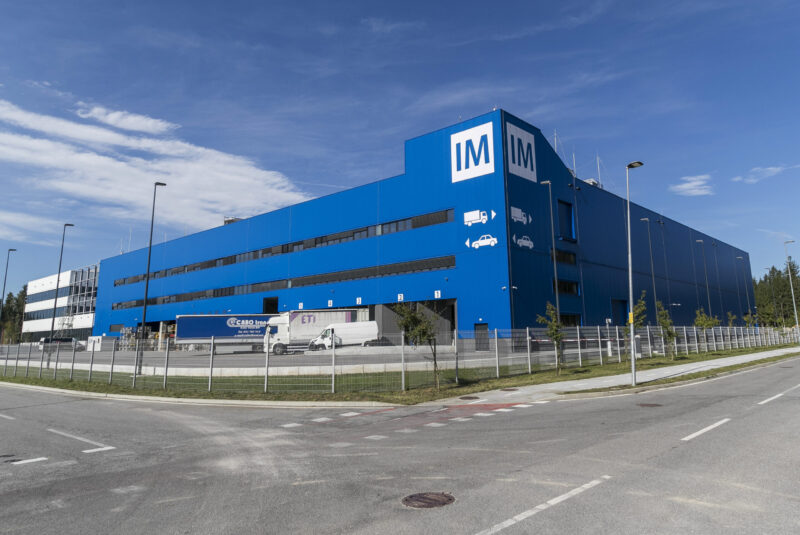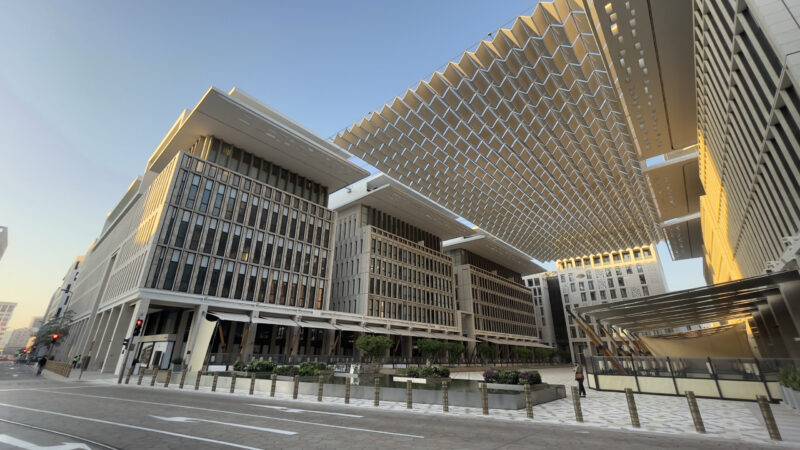If one trend has been clear in recent years in the world of access control, it is that increasing emphasis is being placed on the security level of access cards. The hack of the MIFARE Classic chip in 2007 and 2008 has only made us more aware that selection of the right RFID badge has a great impact on the success of the implementation of a new system for access control and security. However, we are also aware that there are many ways to achieve the required level of security. The next step is for us to realize that access control is not just about security but also about convenience and ease of use. And that now is the perfect moment to introduce UHF.
The current playing field
At present, there are many types of card in use. Generally speaking, the following types of contactless cards are popular in the Netherlands and the rest of the world:
Proximity cards
Operate at 120-125 kHz. Maximum reading distance 90 cm with large antenna in/on reader.Examples: HID Prox, EM, Nedap NeXS.
Smart cards
Operate at 13.56 MHz. Maximum reading distance approx. 10 cm. More suitable for reading and writing.Examples: MIFARE (various versions), Legic Advant, HID iClass, Sony Felica.
Semi-active and active cards
Operate at higher frequency, e.g. 2.45 GHz. Require battery. Distance up to tens of meters.Used, for example, for vehicle recognition or determining the location of persons.
Proximity cards have already been very popular since the early 1980s. During the past decade the smart cards that have become very popular, due to the additional functionalities they offer and the improved security measures (such as encryption). Both types of cards are passive: these cards do not contain a battery.
Active and semi-active cards (such as the compact tag from Nedap AVI) use a battery in order to communicate with the reader. The underlying principles vary from product to product, but very long reading distances can generally be achieved with these cards and transponders, making it possible to implement convenient access control solutions. These cards however also have some disadvantages: Prices are generally somewhat higher than those of passive cards, they are somewhat larger and thicker, and the technology is often supplier-specific. As a consequence, this card technology is generally only used for specific applications.
Choosing the right access card
The process of choosing the right card for your access control and security system is usually based on the following considerations:
Security
How easily can the data on the card be read by those attempting to clone or emulate it? Can the content of the card be manipulated? Is the communication between the card and the card reader encrypted?
Functionality
Can the card be used in different ways? Can it be used for making payments or operating a printer? Can I write information to the card myself in support of my business process?
Price and availability
What does the card cost in small and large quantities? Can I purchase the card from multiple suppliers? Is long-term availability guaranteed?
Appearance
Can I have printing applied to the card? Can I print on the card myself? Can I print on both sides? Is it possible to laser engrave the card? Is it credit card size or does it have other dimensions?
Management
Does the card have a unique number? Does the card have a specific customer code? Can I choose the format of the number that will be used? Is there a well-thought-out management structure?
Convenience
Does the card provide sufficient reading distance for use with the readers of my choice? Does the card technology support convenient access in a robust manner?
Current discussions about card technology almost always revolve around security. The focus is usually on the encryption that is used for the communication between the access card and card reader. That is all good and well, but two important aspects are often forgotten: A higher security level can also be achieved through multiple authentication methods (such as the use of a card reader in combination with a PIN code or biometrics), and the technical side of achieving a higher security level depends on a complete chain of measures. A card with advanced encryption only offers additional security if the communication between the card reader and access control system is also adequately secure. Moreover, all the technical provisions are useless if users are careless with their cards or authorizations are not revoked when cards are lost.
The ‘flow’ in your organization
In addition to security, more attention should be given to the convenience that the card offers during use of the access control system. A system that is easy to use will be more quickly accepted by people within your organization, which will increase support for the security measures you plan to implement.
Many users feel that security systems are, to a greater or lesser degree, a hindrance to their daily work: The use of RFID cards does not help them do their work. Queues form at turnstiles during peak times. It is a nuisance to have to produce an access card when one’s hands are full. In the car park it is often necessary to hang halfway out of the car to reach the card reader. There are many practical situations we can think of in which the user has to make a considerable effort to use the access control and security system.
Fortunately, technology continues to evolve rapidly in the world of security and access control too. In recent years, new technologies have been introduced in the market that enable us to make the use of access control and security systems more convenient.
As security professionals, it should be our goal to achieve the desired level of security without making unnecessary concessions that impact the ‘flow’ in the organization. Where possible, users in your organization should be able to move about and do their work without impairment or delay.
One of the new technologies that provides ways of achieving this is UHF technology.
Introduction to UHF
UHF stands for ‘Ultra-High Frequency’. This term refers to the RFID frequencies between 300 MHz and 3 GHz (3000 MHz). The systems we refer to in this article operate at around 900 MHz. An international standard has been developed for tags and readers that operate at this frequency: the EPC Gen 2 standard. GS1 is the organization responsible for the global management of this standard. The EPC global initiative has developed this standard to implement a RFID platform with which products in a supply chain can be assigned a unique number that can be used to track them throughout the logistics process.
EPC stands for Electronic Product Code and can be seen as the RFID equivalent of the old, familiar barcode. The second generation (Gen 2) of this standard was released in 2004. This standard is now used throughout the world in cards, tags and readers. An ever expanding number of applications in logistics and retail demonstrate the usefulness of this technology.
The big advantage of UHF, in comparison to the technology behind smart cards for example, is that very large reading distances can be achieved with it – and this is possible using cards and tags that do not contain a battery. Even with relatively small readers, a reading distance of several meters is feasible.
A disadvantage is that, as yet, the UHF technology does not support encryption on the card. Accordingly, the inherent security level of UHF cards is somewhat lower than for some smart cards.
For some time now, the use of UHF has been increasing in the security sector. At this point, the primary application is still vehicle identification. UHF tags are, of course, available in the form of access cards, but they are also made in the form of small stickers that can be stuck to the inside of a vehicle windscreen. A UHF reader can read these ‘windshield tags’ at a distance of around four meters, providing the driver with simple, quick and convenient access to a car park or company grounds. The reader sends the number on the tag to the access control system to determine whether the vehicle in question may be permitted access. The gate or bollard then quickly allows convenient access.
UHF for access control in your building
There is a clear trend under way with regard to UHF. Readers and tags are becoming increasingly suitable for applications in systems for access control and security: UHF tags are available in the form of access cards. Credit-card-sized tags equipped with UHF can be read at a distance of several metres. Readers are shrinking in size and are increasingly being equipped with interfaces (Wiegand, RS485, etc.) with which they can easily be connected to access control systems.
There is also a growing number of suppliers that are capable of programming the UHF cards so they can be seamlessly connected to the access control system. If the UHF card is worn on a lanyard, a UHF reader will usually be able to read it at a distance of several metres. This makes it possible to implement great applications, such as:
- Quick and convenient access to various wings in the hospital for nursing staff, even when they are pushing a stretcher to transport a patient to an operation room or recovery room.
- Quick and convenient access to various areas within a logistics centre for employees who are moving pallets.
- Simple access to areas in office buildings when speed and convenience are important and where the card is used more for the purpose of registration than strict security.
- Convenient access through all types of portals for people with a physical impairment.
Many more examples are imaginable. A great recent development is the combi card, which combines UHF with a second technology such as MIFARE DESfire, HID iClass or Legic. This allows you to use one card for both convenient access and for high security access. When zoning the building, prior to installation, you decide whether convenience or security is of greater importance for each zone entrance.
Modern access control systems are capable of upscaling the security level during a shut-down situation. With such systems you can choose to give priority to convenience at certain access points, and when you have a security problem you can activate a different reader or biometric solution to establish strict security at that location.
UHF: a great new option when it comes to access cards
UHF cards are a new weapon in the arsenal of cards for use with access control and security systems. Like any technology, UHF has several advantages and disadvantages, so make sure you ask your supplier to tell you about the possibilities as well as the limitations of this technology.
In our world of security, UHF is a relatively new technology, and seeing as how EPC Gen 2 is an open standard, there are currently quite a number of suppliers working on developing their own readers, tags and other innovations.
If the current trend continues, UHF will undoubtedly stake a strong claim in the world of access control and security. Only time will tell exactly what its role will be, but UHF is certainly a technology to keep your eye on.


